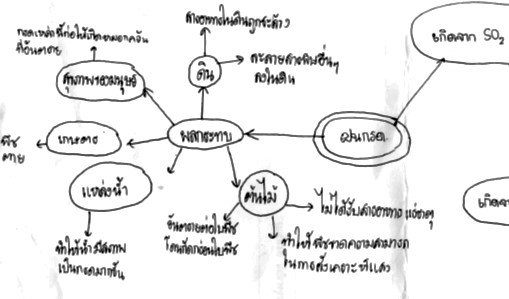แนวปฏิบัติในการพัฒนาทักษะในศตวรรษที่ 21 และแนวคิดเรื่อง สารละลาย ของนักเรียนชั้นมัธยมศึกษาปีที่ 4 ด้วยการจัดการเรียนรู้ด้วยโครงการโดยใช้เทคโนโลยีสารสนเทศและการสื่อสาร
Main Article Content
Abstract
Patiwat Sritipsak, Pattamaporn Pimthong and Apisit Songsasen
รับบทความ: 30 กรกฎาคม 2559; ยอมรับตีพิมพ์: 15 กุมภาพันธ์ 2560
บทคัดย่อ
วัตถุประสงค์ของงานวิจัยนี้เพื่อหาแนวปฏิบัติในการจัดการเรียนรู้ด้วยโครงการโดยใช้เทคโนโลยีสารสนเทศและการสื่อสาร (information and communication technology, ICT) ที่ช่วยให้นักเรียนชั้นมัธยมศึกษาปีที่ 4 พัฒนาแนวคิดเรื่องสารละลายและทักษะในศตวรรษที่ 21 ซึ่งการวิจัยปฏิบัติการในชั้นเรียนใช้ระยะเวลา 3 สัปดาห์ โดยเก็บข้อมูลจากชิ้นงานของนักเรียน บันทึกหลังการสอน บันทึกการนิเทศของอาจารย์นิเทศก์ การสังเกตชั้นเรียน โดยใช้วิธีวิเคราะห์แบบอุปนัย (inductive analysis) ผลการวิจัย พบว่า แนวปฏิบัติในการจัดการเรียนรู้ด้วยโครงการโดยใช้ ICT ในการพัฒนาแนวคิดเรื่องสารละลายและทักษะในศตวรรษที่ 21 คือ (1) ครูควรสร้างแรงบันดาลใจในการเรียนด้วยการจัดการเรียนรู้ด้วยโครงการโดยใช้ ICT (2) ครูควรใช้คำถามขับเคลื่อนโครงการ (driving questions) เพื่อสนับสนุนการวางแผนและการสร้างชิ้นงานของนักเรียน (3) ครูควรให้ผลสะท้อนกลับเพื่อกระตุ้นความสร้างสรรค์ในชิ้นงานและการแก้ไขชิ้นงานของนักเรียน (4) ครูควรส่งเสริมให้นักเรียนรู้สึกว่าตนเองเป็นเจ้าของกระบวนการเรียนรู้ และยังพบว่าครูควรจัดการเรียนรู้ให้เป็นไปตามกระบวนการของการจัดการเรียนรู้ด้วยโครงการ (project based learning-PBL) เพื่อส่งเสริมให้นักเรียนสร้างชิ้นงาน และ (5) ครูควรใช้การประเมินตลอดเวลาตามแนวทางของ PBL โดยใช้ ICT ซึ่งผลวิจัยที่ได้สอดคล้องกับลักษณะที่สำคัญของการจัดการเรียนรู้ด้วยโครงการ
คำสำคัญ: การจัดการเรียนรู้ด้วยโครงการ เทคโนโลยีสารสนเทศและการสื่อสาร ทักษะสำคัญในศตวรรษที่ 21 สารละลาย
Abstract
The research objective of this action research intended to find the way to develop 10th grade students’ 21st century skills and concept of solutions by project-based learning using information and communication technology for 3 week. The data were collected from students’ artifact, teacher logs, comments from university and school supervisors and classroom observations. The data were analyzed by inductive analysis method. The result showed that teacher should use PBL using ICT to motivate students’ learning. The teacher should be a facilitator who uses driving questions to enhance students’ planning and creating their projects. In addition, teacher’s feedbacks were important in order to encourage students’ creativity and revising their plan. Teacher should also encourage students to take their authority in their projects, and teacher should use PBL process to promote students’ creating artifact. Finally, teacher should use formative assessment along the process of PBL using ICT. These results are corresponded to the key feature of PBL.
Keywords: Project-based learning, ICT, 21st century skills, Solutions
Downloads
Article Details

This work is licensed under a Creative Commons Attribution-NonCommercial 4.0 International License.
References
Afriana, J., Ismailm M. S., and Rahman, A. Z. (2015). Improving Scientific Literacy through Project-based Learning. Retrieved from https://goo.gl/xUodNO, July 24, 2015.
ALTEC. (2016). What is a Rubric? Retrieved from http://rubistar.4teachers.org/index. php?screen=WhatIs, March 21, 2016.
Bodner G. M., and Heron, J. D. (2002). Problem-solving in chemistry. In Gilbert, J. K., de Jong, O., Justi, R., Treagust, D. F., and van Driel, J. H. (Eds.), Chemical Education: Towards Research-based Practice (pp. 235 – 266). Dordrecht: Kluwer.
Buck Institute for Education [BIE]. (2015). Gold Standard PBL: Essential Project Design Elements. Retrieved from http:// bie.org/object/document/goldstandard_pbl_essential_project_design_elements., July 14, 2006.
Bunpeng, S. (2015). Developing Grade 11th Students' Conceptions about Rate of Chemical Reaction Using Multiple Representations and Inquiry Learning Activities. Master of Education Thesis (Science Education). Bangkok: Kasetsart University. (in Thai)
Career and Technical Education. (CTE). (2012). 21st Century Skill Standards Rubrics. Retrieved from http://goo.gl/KaZntQ, No-vember 3, 2015.
Chanlinn, L. J. (2008). Technology integration applied to project-based learning in science. Innovation in Education and Teaching International 45: 55–65.
Edutopia. (2014). 5 Keys to Rigorous Project-based Learning. Retrieved from http://www.edutopia.org/video/5-keys-rigorous-project-based-learning, November 3, 2015.
Edutopia. (2015). Project-Based Learning. Retrieved from http://www.edutopia.org/ project-based-learning, November 3, 2015.
Grant, M. (2002). Getting a grip on project-based learning: Theory, cases and recom-mendations. Meridian: A middle School Computer Technologies Journal. Retrieved from http://www.ncsu.edu/meridian/ win2002/514/project-based.pdf, November 3, 2015.
Institute for the Promotion of Teaching Science and Technology. (2014). PISA 2012 Results in Mathematics, Reading, and Science: What do students know? and What can students do? Bangkok: Aroon Printing. (in Thai)
Intel Teach to Future. (2007). Designing Effective Projects: Designing Projects and Benefits of Learning Projects. Retrieved from https://goo.gl/rwqIXQ, September 15, 2015. (in Thai)
Kay, K. (2011). 21st Century Education and PBL. Retrieved from http://bie.org/blog/ 21st_century_education_and_pbl, October 15, 2015.
Krajcik, J., Charlene, M.C. and Carl, F. B. (1999).Teaching Science in Elementary and Middle School Classrooms: A Project-Based Approach. 2nd ed. New York: McGraw-Hill.
Larmer, J., and Mergendoller, J. R. (2010). Seven essentials for project-based learning. Educational Leadership 68(1): 34–37.
Ministry of Education. (2014). 21st Century Learning. Retrieved from http://goo.gl/sbJHkJ, October 13, 2015. (in Thai)
Mioduser, D., and Betzer, N. (2007). The contribution of project-based-learning to high-achievers’ acquisition of technological knowledge and skills. International Journal of Technology and Design Education 18(1): 59–77.
Organization for Economic Co-operation and Development (OECD). (2013). PISA 2015 Draft Science Framework. Retrieved from http://www.oecd.org/pisa/pisaproducts/pisa 2015draftframeworks.htm, September 21, 2015.
Papert, S., and Harel, I. (1991). SituatingConstructionism. Retrieved from http://web.media.mit.edu/~calla/web_comunidad/Reading-En/situating_constructionism.pdf, November 3, 2015.
Partnership for 21st Century Learning. (2015). Framework for 21st Century Learning. Retrieved from http://www.p21.org/our-work/p21-framework, September 21, 2015.
The Ministry of Education. (2008). Indicators and Learning Standards in Learning Area of Science: The Basic Education Core Curriculum B.E. 2551. Bangkok: The Agricultural Cooperative Federation of Thailand. (in Thai)
Thomas, J. (2000). A review of research on project-based learning. Retrieved from http://www.ri.net/middletown/mef/linksresources/documents/researchreviewPBL_070226.pdf, November 3, 2015.
Treagust, D. F., Chittleborough, G. D. and Mamiala, L. T. (2003). The role of sub-microscopic and symbolic representations in chemical explanations. International Journal of Science Education 25(11): 1353–1368.
